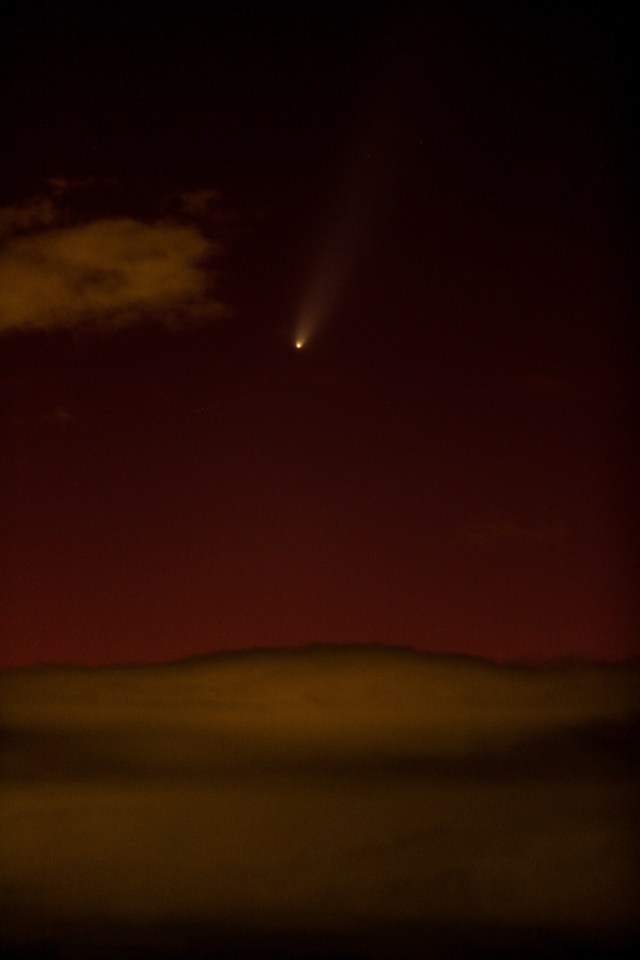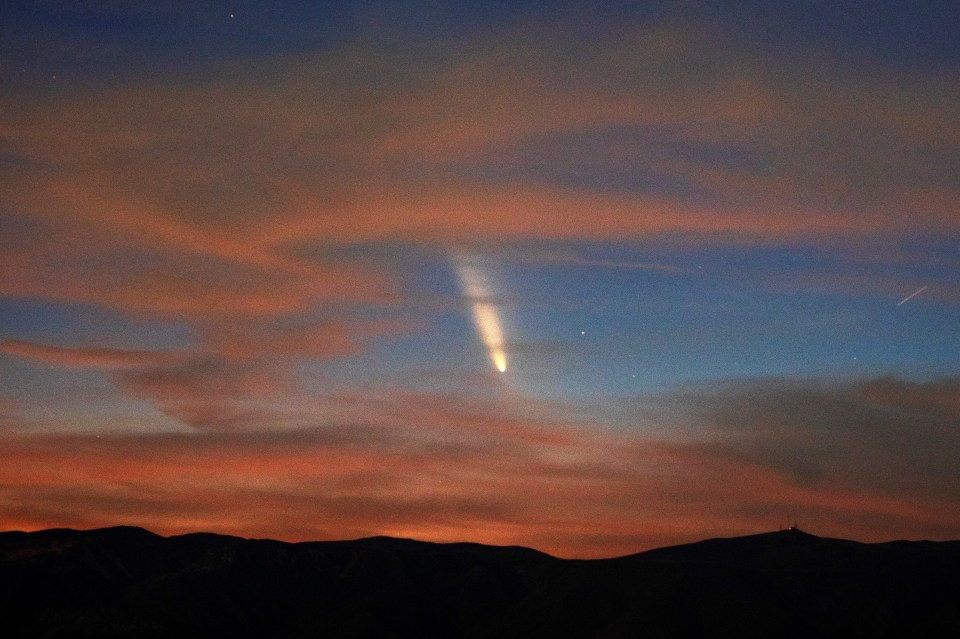ONE of the brightest comets to pass Earth in nearly 20 years could be visible to the naked eye in a once-in-a-lifetime display next week.
The space rock, formally known as G3 ATLAS (C/2024), is expected to reach peak brightness later this week.
It will maintain its glow into early next week, as it gets closest to the sun on 13 January.
It could shine as bright as Venus, or similar to Tsuchinshan-ATLAS / Comet C/2023 A3, the "comet of the century" that stunned stargazers in mid-October.
The comet was first spotted by the Asteroid Terrestrial-impact Last Alert System (ATLAS) on 5 April last year - when it was 407 million miles away from Earth.
It is now zooming past at less than 9million miles from the Sun - an exceptionally close pass that could allow it to be visible to the naked eye.
READ MORE ON SPACE
Small 'sungrazer' comets often don't make it past the burning blaze of Earth's closest star.
Let's take the 'Halloween Comet' / C/2024 S1 (ATLAS) for example; calculations suggested that this hunk of celestial debris would be visible to the naked eye even in daylight skies.
But it flew too close to the Sun, and burnt up before stargazers got a chance to see it.
Scientists, however, remain hopeful.
Most read in Science
After examining G3 ATLAS's orbit, scientists determined that it takes this space rock roughly 160,000 years to make its pass of Earth and the Sun.
With that calculation, astronomers assume the old comet has already made at least one pass of the Sun in its lifetime - and survived.
In theory, it could mean that G3 ATLAS can handle at least another close encounter with the Sun.
The predicted path of G3 ATLAS favours those in the Southern Hemisphere.
That being said, it may still be visible from the Northern Hemisphere - as it currently sits inside the Sagittarius constellation.
It will just be harder to see.
"As with all comets, its visibility and brightness can be unpredictable," said Dr Shyam Balaji, a researcher in astroparticle physics and cosmology at King’s College London.
"Observers may have opportunities to spot it in the days around perihelion, depending on local conditions and the comet's behaviour."
Although he added that viewing opportunities are "notoriously uncertain" and that many comets end up being fainter than expected.
What's the difference between an asteroid, meteor and comet?
Here's what you need to know, according to Nasa...
- Asteroid: An asteroid is a small rocky body that orbits the Sun. Most are found in the asteroid belt (between Mars and Jupiter) but they can be found anywhere (including in a path that can impact Earth)
- Meteoroid: When two asteroids hit each other, the small chunks that break off are called meteoroids
- Meteor: If a meteoroid enters the Earth’s atmosphere, it begins to vapourise and then becomes a meteor. On Earth, it’ll look like a streak of light in the sky, because the rock is burning up
- Meteorite: If a meteoroid doesn’t vapourise completely and survives the trip through Earth’s atmosphere, it can land on the Earth. At that point, it becomes a meteorite
- Comet: Like asteroids, a comet orbits the Sun. However rather than being made mostly of rock, a comet contains lots of ice and gas, which can result in amazing tails forming behind them (thanks to the ice and dust vaporizing)
How to see it
Dr Balaji said stargazers should look toward the eastern horizon before sunrise for the chance to see it.
After it makes its closest pass of the Sun, a journey known as perihelion, stargazers should turn their eyes to the western horizon after sunset.
That's if, it survives the approach.
“For observers in the Northern Hemisphere, including the UK, viewing conditions may be challenging due to the comet's position relative to the Sun," he added.
Read More on The Sun
"Visibility will depend heavily on local conditions and the comet's actual brightness.
"Observers should consult local astronomy resources for up-to-date viewing recommendations as the date approaches.”
The Sun – all the facts you need to know

What is it, why does it exist, and why is it so ruddy hot all the time?
- The Sun is a huge star that lives at the centre of our solar system
- It’s a nearly perfect sphere of hot plasma, and provides most of the energy for life on Earth
- It measures a staggering 865,000 miles across – making it 109 times bigger than Earth
- But its weight is 330,000 times that of Earth, and accounts for almost all of the mass in the Solar System
- The Sun is mostly made up of hydrogen (73%), helium (25%) and then a number of other elements like oxygen, carbon and iron
- Its surface temperature is around 5,505C
- Scientists describe the Sun as being “middle-aged”
- The Sun formed 4.6 billion years ago, and it’s been in its current state for around four billion years
- It’s expected that it will remain stable for another five billion years
- It doesn’t have enough mass to explode as a supernova
- Instead, we expect it to turn a hulking red giant
- During this phase, it will be so big that it will engulf Mercury, Venus and Earth
- Eventually it will turn into an incredibly hot white dwarf, and will stay that way for trillions of years


















